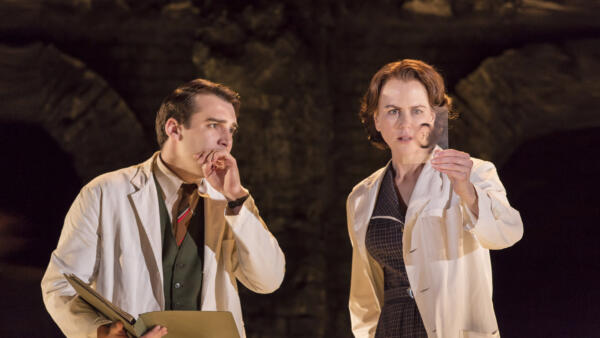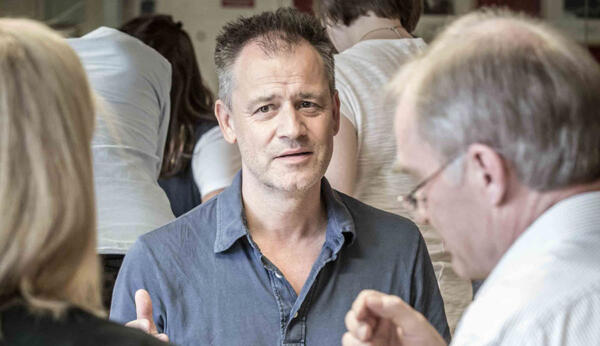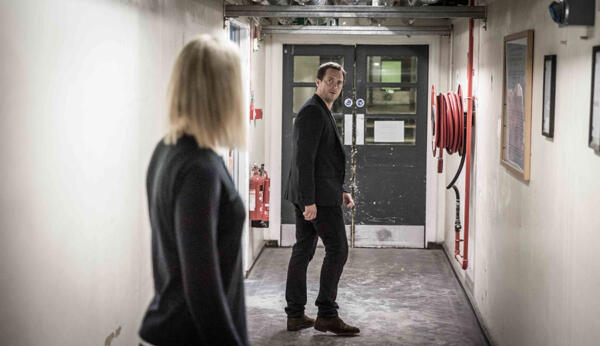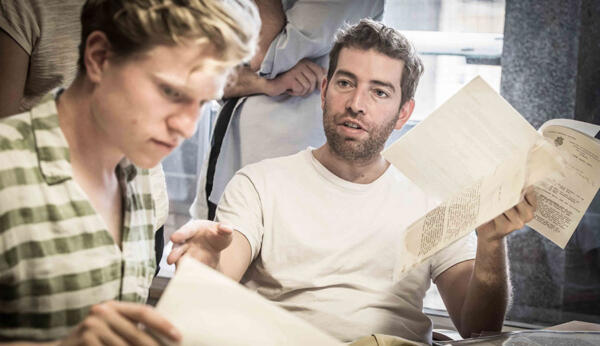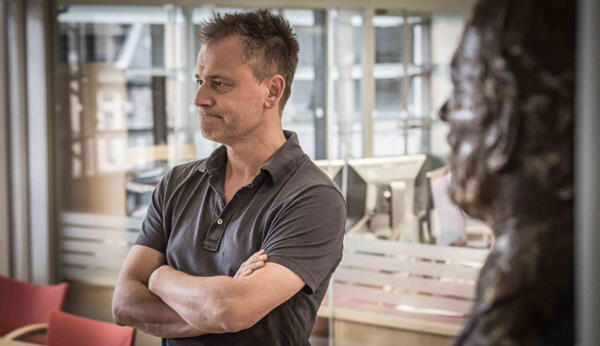Photograph 51 | Inside the Rehearsal Room
Photograph 51– Week One, Day One
Education Associate Dominic Francis provides an insight into the cast and Creative Team’s rehearsal process for Photograph 51
In his welcome and introduction to the cast and Creative Team of Photograph 51, director Michael Grandage suggests that this production will have a reach beyond the immediate arts community due to the play’s scientific content. In this regard, he comments, it’s similar to Frost/Nixon by Peter Morgan, which he directed at the Donmar Warehouse in 2006 – the play that centers on the famous television interview between presenter David Frost and former American President Richard Nixon. Both plays depict real-life people and events, events within recent living memory that impacted upon wider society. Of the people that feature in Photograph 51, it’s noted that both James Watson and Don Caspar are still alive.
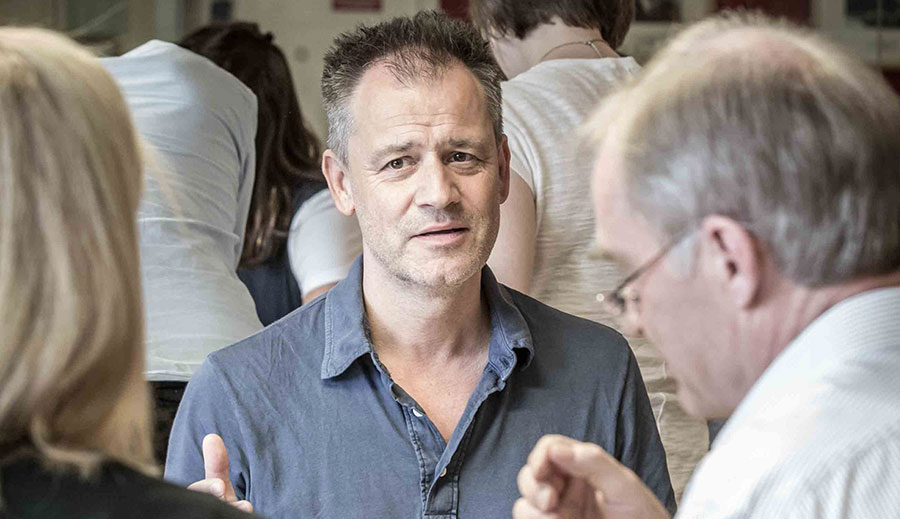
Commenting upon the fractious relationships between many of the characters in the play, in particular Rosalind Franklin and Maurice Wilkins, Michael highlights the need for harmony amongst the cast: ‘We’ve got to do almost the exact opposite to what happened at King’s College and in Cambridge, where we need to be collegiate and get on!’
Designer Christopher Oram then presents the model-box of the set – a subterranean world of top-secret laboratories and shadowy catacombs deep below the city. Reflecting upon the discovery of DNA itself, Christopher was drawn to the idea of ‘the building blocks of life coming straight from the rebuilding of London after the Second World War’. Piles of rubble collect round the bases of grimy, bomb-blasted pillars with arches piled one on top of the other. Contrasting this is a brightly-lit floor divided into neat squares, immediately suggesting the sterility and precision of scientific endeavour. Sharing his initial thoughts about staging, Michael comments, ‘I’ve got a feeling it might be everyone on stage throughout’.
Once Christopher has finished, all the personnel who’d gathered for the initial ‘Meet and Greet’ depart, leaving the cast, key members of the Creative Team and Stage Management in the room to start rehearsals proper. Michael begins by talking briefly about the background to the production: ‘About three or four years ago, Nicole and I had a conversation about working together and I came back with lots of ideas for plays, but what Nicole really wanted to do was a new piece. It took three and a half years to find one.’
This was Photograph 51, which Michael describes as being about a ‘scientific injustice’ – the apparent omission of Rosalind Franklin from the official history of the discovery of DNA. ‘It’s a phenomenally beautiful human story about mis-connections,’ says Michael, reflecting on the relationships between the various characters, especially Rosalind and Maurice. ‘At times, it reads like a thriller.’ This element in particular, he believes, will appeal to audiences. ‘I think total engagement is possible here because people won’t know what happened to Rosalind Franklin. People won’t know the outcome of this race.’ Here he sounds a note of caution, in terms of foreshadowing the characters’ fractured relationships: ‘Let’s not enjoy creating a level of dysfunctionality.’ It’s a reminder of the old note about not playing the ending at the beginning – the audience has to witness the gradual deterioration for themselves.
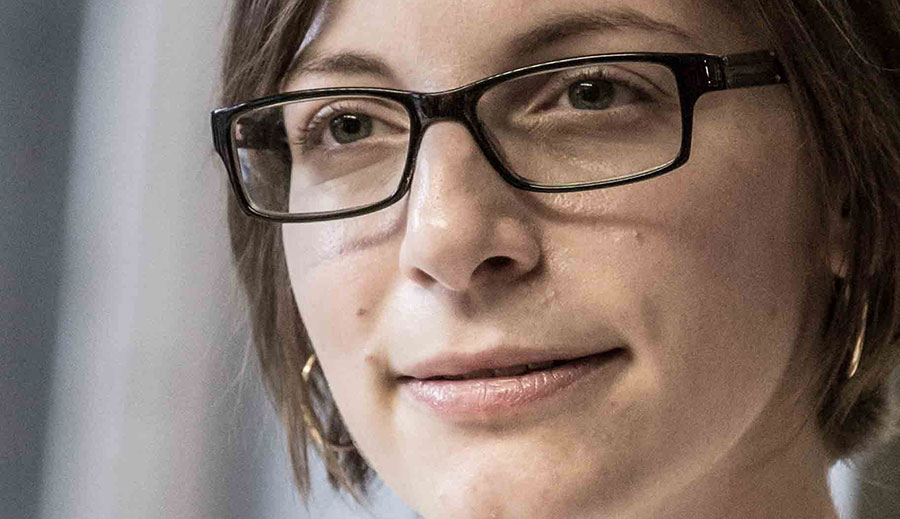
Michael then turns to playwright Anna Ziegler, who begins by acknowledging, ‘I am not a science person – I was daunted by the idea of writing this play’. Before starting work on Photograph 51, she reveals she hadn’t heard of Rosalind Franklin. Anna accepted a commission from a small theatre to write a play about three female scientists, including Franklin, and ultimately felt that Rosalind deserved her own. ‘I liked the notion that a major scientific discovery was the result of failed human relations. To some extent, Rosalind’s own DNA got in the way. It’s a play about collaboration, or the failure to collaborate. What felt universal was the struggle to find the right balance in our lives.’ She questions whether it’s a ‘feminist’ play – ‘Some people say it is.’
Nicole Kidman, playing Rosalind, reflects on her own connections to the world of the piece – her father was a scientist and her mother a nurse: ‘I grew up in hospitals and science labs. They have distinct smells.’
Michael then outlines his rehearsal process, especially for the benefit of those who haven’t worked with him before. His preference is not to start with discussion around a table but to let it come from the action. He plans to get the play ‘on its feet’ from this afternoon and to start ‘sketching’ the scenes, like an artist beginning with an under drawing and gradually adding more detail.
Michael encourages everyone to be ‘physically present, not just intellectually present’. Next week, he says, they’ll return to in-depth discussion – ‘Once we’re comfortable in our own physicality. We will come to a good, serious analysis, bit-by-bit.’ By working in this way throughout the first week, says Michael, ‘we’ll have gone through the whole play by Thursday at 6pm’. At this early stage, he’s keen for the priority to be an exploration of story and characters. ‘This week use your script,’ Michael urges the cast. He doesn’t want them or him to be preoccupied by the need for prompts. He recommends the actors then take the first weekend to ‘absorb’ the work done during week one.
The rehearsal period for Photograph 51 is shorter than MGC’s previous productions – four weeks instead of five – but with a relatively short play and a small cast, the Creative Team think it enough time. Broadly outlining the four weeks, Michael explains that week one will feature talks and visits – including a presentation by Professor Brian Sutton later that day and a trip to the King’s College Archives on Friday – weeks two and three will focus on further analysis of the play and week four will be the one in which everything is put together. ‘Everyone should be completely prepared by the first preview,’ he reassures the cast. ‘You will know who you are and what your objectives are.’ That said, Michael encourages the actors to continue making discoveries about the play and characters throughout previews: ‘You can start to make more choices in front of an audience – see where things land.’
Turning his attention to the other elements of production, Michael explains that Composer and Sound Designer – and long-term collaborator – Adam Cork will be in rehearsals for the whole of week one. They’ll be having discussions about the development of the sound and music, which Michael describes as ‘almost like another character’. He confirms that the cast will at times be amplified ‘to help swell the atmosphere’ – those moments where the sound/music builds and it’s vital we can continue to hear the actors and their lines clearly. ‘It’s there for support,’ says Michael, who still encourages the cast to project. He will, he says, do some vocal work as a company, leading them through several exercises.
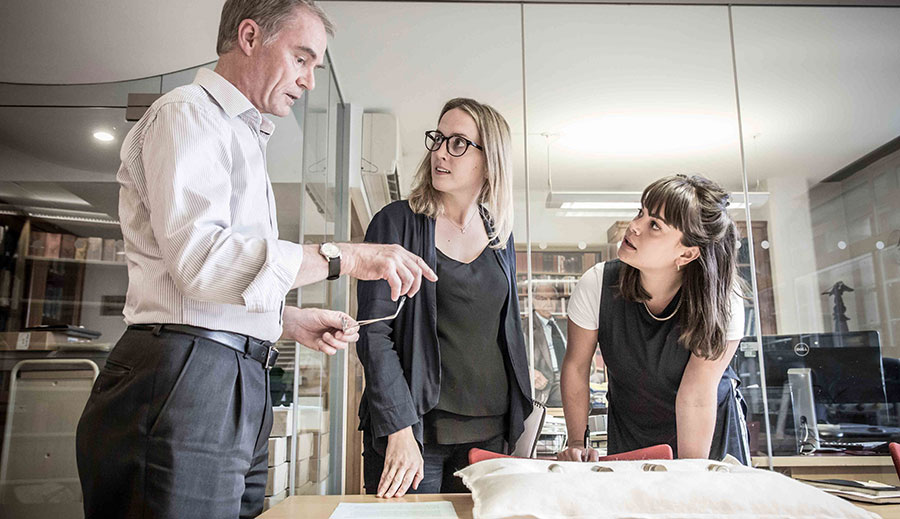
There then follows a talk by Professor Brian Sutton of King’s College, focused on ‘DNA and the Human Genome’. This is a version of a lecture he gives to students which outlines the fundamentals of X-Ray Crystallography and the discovery of the double helix, and provides a vital opportunity for the cast and Creative Team to ask questions in an attempt to clarify the science behind the play. Afterwards, Anna and the professor discuss some of its details during a break in the day’s work, the playwright making further factual revisions to the text.
The cast reconvenes after lunch and, reflecting on the talk, Michael highlights the professor’s passion for his subject, which he thinks particularly helpful for the actors: ‘It would be great for all of you, as scientists, to have different levels of enthusiasm.’
Turning to the first scene of the play, Michael suggests they ‘read a few pages and then stand it on its feet’. Both he and Anna have a few script changes to give the cast, mostly Americanisms that wouldn’t have been in common usage in 1950s’ England – for example, ‘OK’. There’s also some discussion about which ending they’re going to use, a slight variation in the closing two lines of the play.
At the start of rehearsals, Michael reassures the actors: ‘There’s no such thing as a stupid question. You shouldn’t even pass on asking something, even if it’s just for clarification.’ To aid in the cast’s understanding of the play, especially the science, Associate Director John Haidar has compiled a glossary of terms. There’s some discussion about the historical events versus the fictional ones in the play, which includes questions about time and place – ‘Where are we when we’re talking to the audience?’ queries one actor. Michael asks Anna if she can clarify this, before adding: ‘A present day, a present future that they all exist in together.’
This early exploration, says Michael, is about ‘trying to create a language for the play – directorially, sound, lighting, everything’. He thinks the lights coming up on Nicole talking directly to the audience at the start is a ‘wonderful way to open the production and break down the fourth wall’. Nicole wonders whether Rosalind should be addressing an audience to help ‘place’ the scene? ‘I think your relationship with us (the actual audience in the theatre) is critical,’ says Michael. He believes finding someone for Rosalind to address, a character with whom she has a relationship, would establish a connection with them that pre-exists Rosalind’s relationship with the theatre audience. Michael confesses he used to shy away from direct-address, but his 2008 production of Anton Chekhov’s Ivanov at the Wyndham’s Theatre marked a ‘turning point’ where he came to realise its full potential.
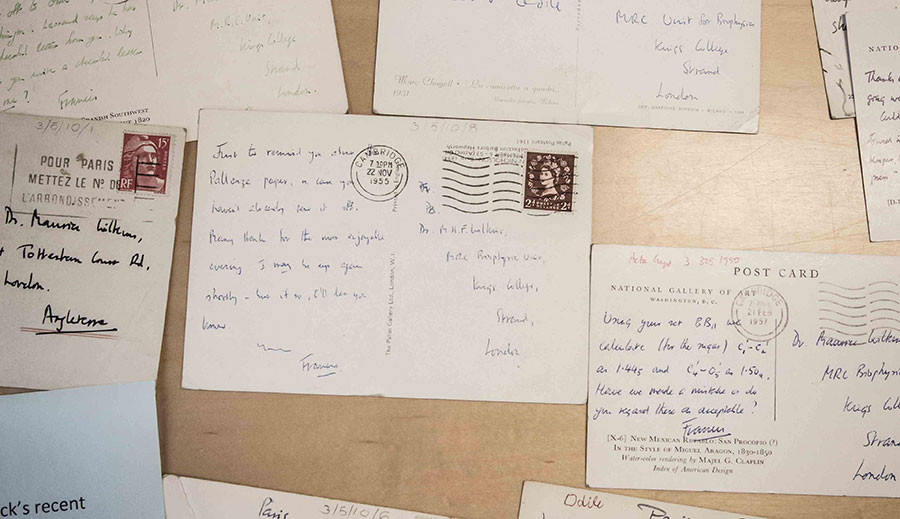
This leads to a brief discussion about the staging of the various letters in the play – Rosalind’s letter to her mother, Don’s correspondence with Rosalind, etc. ‘We will also clarify this moment with lighting,’ explains Michael, whose preference is for a simple solution. ‘I don’t want to get too static with two pages of a letter.’ It’s proposed that the reading of the letters be similar to a telephone conversation.
Referring to the phrase ‘the secret of life’, Michael observes: ‘This is where poetry meets science.’ Meanwhile, Nicole’s curious why Rosalind acquiesces so early in her encounter with Maurice – ‘I don’t suppose it matters’ – having previously challenged him? This, and other questions, are discussed in some detail.
Michael also starts to remind the cast of basic stagecraft, commenting on their positioning on stage: ‘Don’t get in a line.’ His ear is attuned to the detail of the text, asking Edward Bennett, playing Francis Crick, to whom he’s referring with the ‘we’ in his line – ‘Well, that’s not what we heard’ – in a discussion about Rosalind’s reasons for joining the staff at King’s.
Returning to the beginning of the scene, he asks the cast to ‘start it with a beat’. He considers where Rosalind’s positioned at the top and thinks her using the microscope looks too settled. Nicole wonders how long it’s been since she started working there? How settled should Rosalind look? Michael reflects on this, before saying: ‘My instinct tells me that for the first picture you should be sitting.’ He suggests to Joshua Silver, playing Ray Gosling, that he’s ‘got two options… you could be clearing Wilkins’ place, or making your own space with Rosalind’. He also questions which other characters are present, whether directly in the scene or not: ‘Who’s on, in the background, witnessing the action?’
The question arises of when this scene takes place in relation to the others? ‘Is it the following week?’ asks Michael, ‘or has more time passed in order for relationships to have developed?’ He reflects on the overall shape of the piece: ‘Because this scene is echoed towards the end of the play, it would be nice if the physicality here echoed it too.’
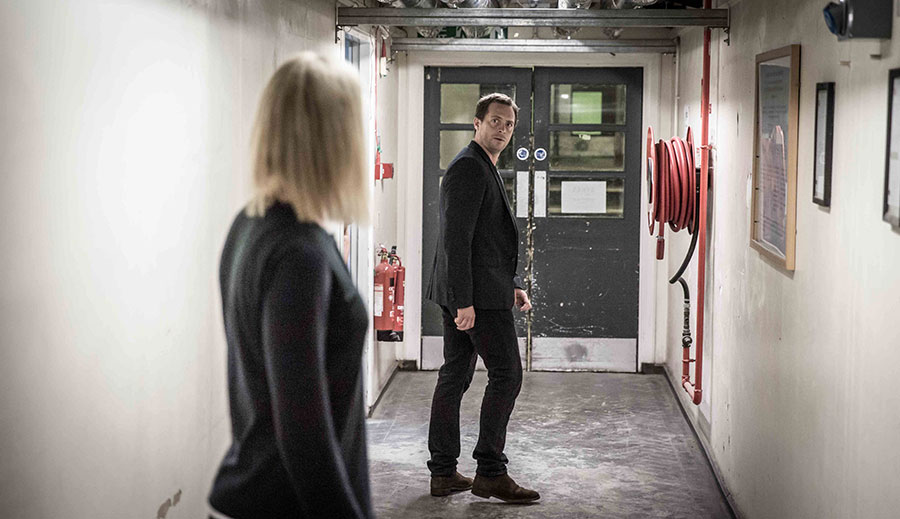
Michael thinks an early encounter between Rosalind and Maurice should be played as a ‘corridor scene’ – ‘On their way to work.’ Afterwards, he observes: ‘I can’t speak for your characters, but for the audience it feels as if something has moved on.’ Bringing the first day’s rehearsal to a close, Michael congratulates the actors and adds: ‘Well done, you’ve made excellent progress today. Write down anything you’ve decided is working.’
